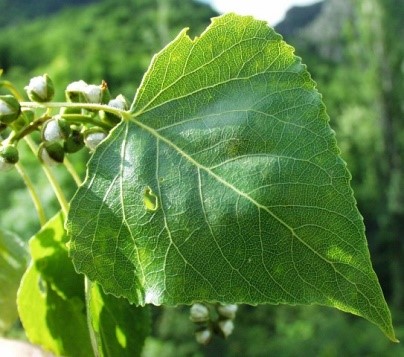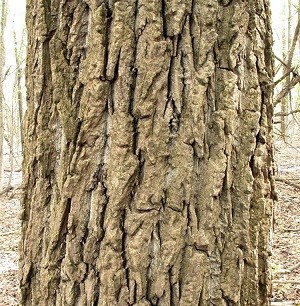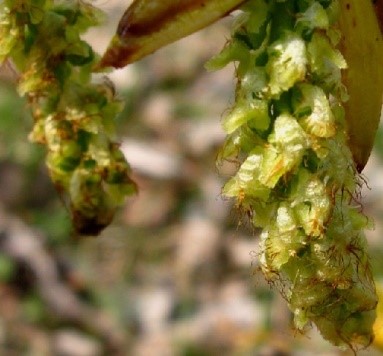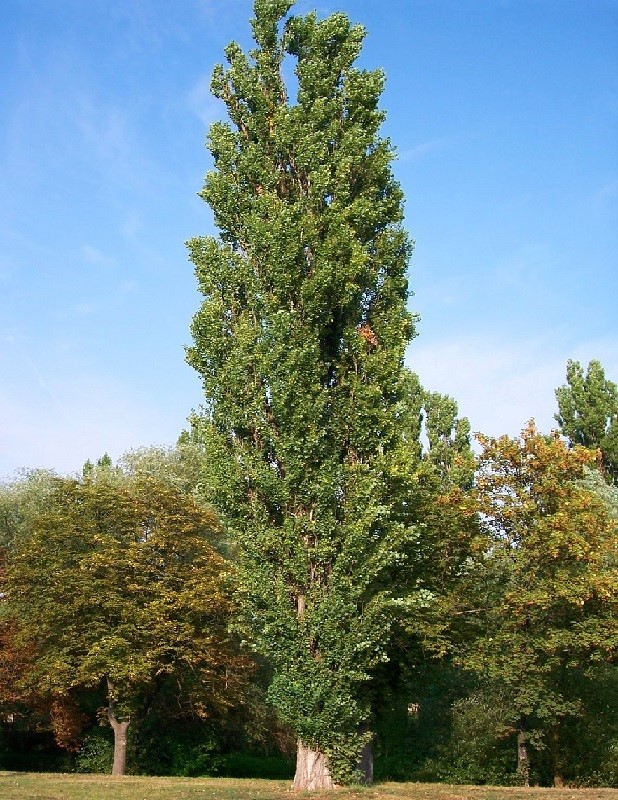Trees
Populus nigra Linn.
Populus nigra Linn.
Description :
A large, deciduous tree 15 to 27 m tall with diameters of 60 to 90 cm.
The trunk is straight with fastigiate branching and the crown is cylindrical.
The leaves are simple, lobed 5 to 10 cm long. It is dioecious. The male catkins
are 2.5 to 7.5 cm long and the female catkins are 5 to 15 cm long. Flowering
and seed production occurs between January and June. It does coppice. There are
no significant disease or insect problems when planted on a favorable site;
however if the tree is stressed it can be attacked by a number of defoliators.
Gall formation by insects has been observed. It is reproduced both from seed
and by vegetative means however, most individuals are the result of root
suckers or cuttings. Seed has not been readily used to propagate this tree in
Pakistan. It is relatively fast growing. Yields of 10 to 15 m3/ha/yr
have been recorded. Grains straight, fine, and even textured. Sapwood is white
and heartwood is pale to olive brown having specific gravity of 0.46 and a
calorific value of 5000 kcal/kg.
Distribution :
The
tree is native to Western and Central Europe, the Middle East, and the
Subcontinent. In Pakistan it is planted in all provinces, Gilgit Baltistan,
and Azad Kashmir. It has been successfully planted in the plains. The best
specimen is available in Gilgit Baltistan. An intolerant tree that grows on a
variety of well drained sites along water courses. It is adapted to a
precipitation zone of 650 to 900 mm/yr or more, in a temperature range of -20
to 45°C. It prefers an arid, cool-cold, sub-tropical climate. It is frost
hardy. It has an elevation range from 900 to 3750 m.
Uses :
This
is a good farm forestry tree because of its fast growth and large size. The
wood is valued and can provide fuel as well as timber in areas where forests
have been destroyed by over harvest. Also used for fuel, packing cases and
crates, matches, erosion control and reforestation, plywood, pulp, fodder,
roadside tree, and general construction purposes.



